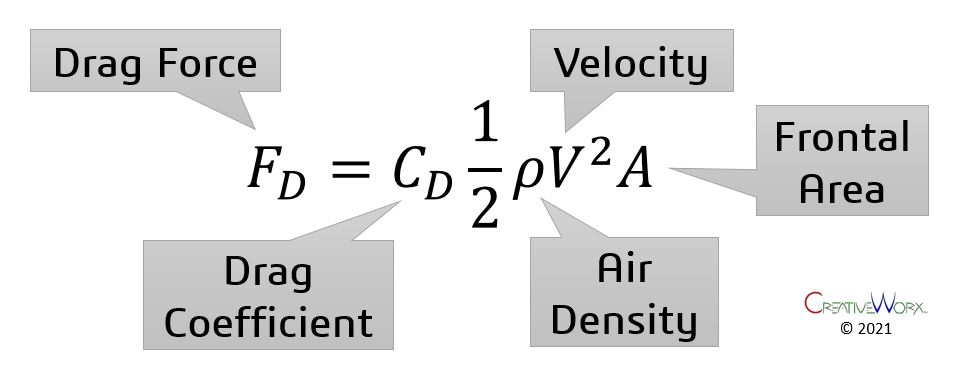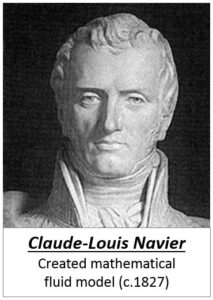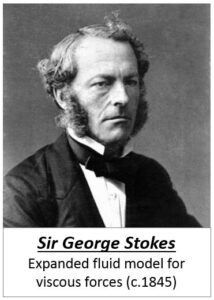Aerodynamics is the study of how air flows around an object. When it comes to vehicles & aerodynamics, people typically think of air planes or race cars. But the field of aerodynamics is becoming increasingly important to all road vehicle designs in the push to maximize efficiency. So here we will briefly discuss some aerodynamic fundamentals.
As a vehicle moves through the air, it must continually push air out of the way & at the same time the air must again fill in where the vehicle just was. Throughout this process, a force resisting the motion of the vehicle is generated & is known as the drag force or sometimes just drag. The drag force can be further broken up into friction drag & pressure drag components which both have an influence on something called the drag coefficient. The drag coefficient can be used to compare one design against another, where the design with the lower drag coefficient will be more aerodynamic. The equation for drag force is as follows:

One thing that should stand out is the fact that drag is a function of the square of the vehicle speed (velocity). So, a vehicle that spends a lot of time at 70 mph on the interstate will benefit exponentially more from aerodynamic improvements compared to a vehicle that spends most of its time driving around a city under 30 mph. This is why aerodynamic design is critical for aircraft & race car designs which operate at very high speeds. But there are certainly efficiency gains to be realized by applying proper aerodynamic designs for vehicles operating at highway speeds.
Another important factor influencing drag is the frontal area of the vehicle. To visualize this, picture a vehicle backed up close to a wall & then a lamp illuminates the front of the vehicle to project its silhouette on the wall. The area of the silhouette would approximate the frontal area. Obviously, this tells us that the bigger the vehicle is, the more drag it will have. This is because it has more air to displace & more area for pressure to act on. Generally speaking, there is high pressure pushing against the forward-facing surfaces, while there is low pressure pulling back on the rearward facing surfaces.
But does this mean aerodynamic designs are futile for large vehicles? Absolutely not! In fact, aerodynamics are even more critical for large vehicles! If high speed vehicles require attention to aero design, then the next type of vehicle that stands to benefit the most from aerodynamic focus are those with large frontal areas. This challenge is what inspired the development of the Lumenar Aerodynamic Treatment.
This is why class 8 semi trucks & trailers have had heavy focus on aerodynamics in recent decades from the standpoint of both the OEM vehicle designs & aftermarket component designs. While the class 8 commercial vehicle market has made strides in efficiency, those applications have some functional limitations to some of the designs that can be applied. On the other hand, there are plenty of other large vehicles that have room for improvement, but have had very little focus on unlocking aerodynamic opportunities. These include some of the following vehicle applications:
Motor Coach, Custom Coach, Tour Bus, Charter Bus, Class A Motorhome, Class C Motorhome, Recreational Vehicle (RV), Travel Trailer, Towable Camper, Fifth Wheel Trailer, Emergency Vehicle, Fire Truck & Parcel Delivery Vehicle
![]() The Lumenar™ Aerodynamic Treatment (This page is currently under construction)
The Lumenar™ Aerodynamic Treatment (This page is currently under construction)





